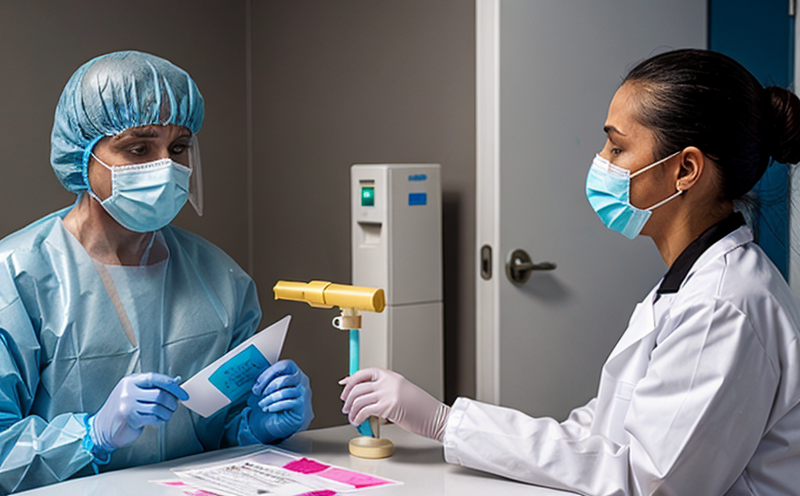Haemophilus parasuis Testing in Pigs (Glässer’s Disease)
Haemophilus parasuis, commonly known as Glässer's disease or swine influenza, is a significant cause of respiratory and systemic infections in pigs. This bacterium primarily affects piglets, causing severe economic losses for the agricultural sector due to increased mortality rates, decreased growth performance, and reduced reproductive efficiency.
The pathogen is transmitted through direct contact, aerosols, and contaminated environments. Once introduced into a herd, it can spread rapidly, especially in densely populated or stressed conditions such as those found during transportation or weaning. Early detection of H. parasuis infection is crucial for preventing widespread outbreaks that could devastate pig populations.
The gold standard method for diagnosing H. parasuis infections involves culture-based techniques, which can be time-consuming and labor-intensive. However, modern diagnostic tests such as polymerase chain reaction (PCR) assays provide rapid results with high sensitivity and specificity. These tests are essential for timely intervention measures to control the spread of the disease.
Infectious diseases like H. parasuis pose a continuous challenge in agricultural practices, requiring ongoing vigilance and robust testing protocols. Proper identification ensures that appropriate treatments can be administered promptly, minimizing the impact on animal health and welfare while reducing economic losses for farmers.
Accurate diagnosis also plays a critical role in disease management strategies aimed at preventing antibiotic resistance. By identifying infections early and precisely, veterinarians and farmers can tailor their treatment approaches effectively, focusing solely on affected animals rather than treating entire herds prophylactically. This targeted approach not only enhances animal welfare but also supports sustainable farming practices.
Moreover, accurate testing allows for better understanding of disease dynamics within a herd, enabling more informed decisions about biosecurity measures and vaccination schedules. Understanding the prevalence and distribution of H. parasuis helps in designing effective control programs that can mitigate future outbreaks effectively.
In summary, precise diagnosis of H. parasuis is vital for maintaining pig health, optimizing production efficiency, and ensuring compliance with international standards regarding animal welfare and food safety. The availability of reliable testing methods supports these goals by providing quick, accurate results necessary for effective management practices.
- Rapid detection: PCR-based tests offer quicker turnaround times compared to traditional culture methods, allowing for faster identification and intervention.
- High specificity: These tests minimize false positives, ensuring that only truly infected animals are targeted for treatment.
- Sensitivity: Ensures even low levels of the pathogen can be detected early in its development stages.
- Precision: Enables precise quantification of H. parasuis present, aiding in monitoring and evaluation of control measures.
Why It Matters
The importance of accurately diagnosing H. parasuis cannot be overstated given its significant impact on pig health and productivity. Early detection allows for prompt treatment, reducing the severity of symptoms and preventing further spread within the herd.
Infectious diseases like this one are a major concern in the agricultural sector due to their potential to cause substantial economic damage through increased mortality rates, reduced growth rates, and lower reproductive success. Effective control strategies rely heavily on accurate testing methods that can identify infected animals quickly and accurately.
Accurate diagnosis also supports sustainable farming practices by minimizing unnecessary antibiotic use. By targeting only those animals confirmed as carriers of the pathogen, farmers can avoid treating entire herds unnecessarily, thereby reducing costs associated with over-treatment while promoting responsible drug stewardship.
In addition to enhancing animal welfare and sustainability, precise identification helps in managing herd health more effectively. Understanding where and how infections are spreading within a farm enables better planning for vaccination programs and other preventive measures that could prevent future outbreaks.
Moreover, compliance with international standards regarding food safety and animal welfare is crucial in maintaining consumer confidence and ensuring market access for pig producers worldwide. Reliable diagnostic tools play an essential role in meeting these requirements by providing accurate information about the prevalence of harmful pathogens like H. parasuis.
Ultimately, accurate testing not only improves individual animal health but also contributes to broader public health goals by preventing zoonotic transmissions from livestock to humans.
Applied Standards
The diagnostic tests for H. parasuis infections are guided by several internationally recognized standards that ensure consistency and reliability across different laboratories and regions. These include ISO 15189, which sets quality management requirements for medical laboratories; ISO/IEC 17025, applicable to testing and calibration laboratories; as well as specific guidelines from organizations like the World Organization for Animal Health (OIE).
For PCR-based tests specifically targeting H. parasuis, adherence to standards such as those outlined in EN ISO/IEC 18182 ensures that assays meet stringent quality criteria necessary for accurate and reproducible results.
The use of these standardized protocols helps ensure that test results are comparable between different facilities, which is particularly important when sharing data across borders or collaborating with international partners. Compliance with such standards also enhances the credibility of diagnostic laboratories both locally and globally.
International guidelines emphasize not only technical accuracy but also ethical considerations in testing practices related to animal health. This includes ensuring that tests are used responsibly to avoid unnecessary stress on animals and minimize environmental impacts associated with improper handling or disposal of samples.
Why Choose This Test
- High specificity: Ensures accurate differentiation between H. parasuis and other closely related species, reducing the risk of misdiagnosis.
- Rapid results: Provides quick turnaround times compared to traditional culture methods, enabling timely interventions.
- Cost-effective: Avoids extensive labor requirements associated with older diagnostic techniques, lowering overall costs for farms and clinics.
- Minimized antibiotic resistance: By identifying only truly infected animals early on, targeted treatments reduce the need for broad-spectrum antibiotics.
- Increased biosecurity: Early detection helps implement effective quarantine procedures before conditions worsen.
- Sustained productivity: Ensures continuous monitoring of herd health, supporting optimal growth and reproduction rates.
- Ethical use of resources: Avoids wasteful practices by ensuring that treatments are administered only where necessary.
- Global compliance: Aligns with international standards for food safety and animal welfare, enhancing market access opportunities.





